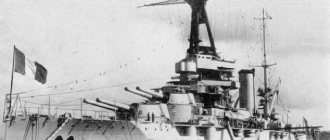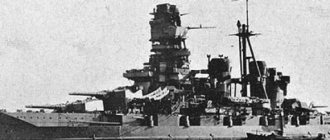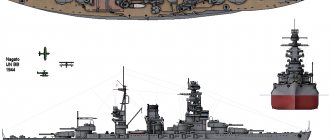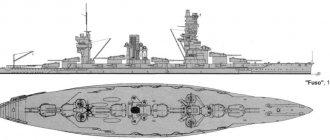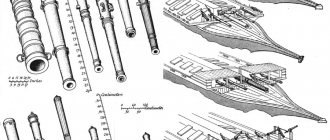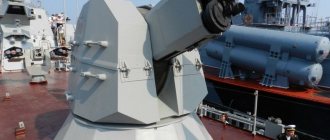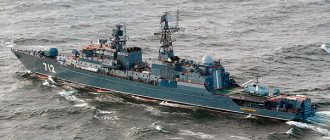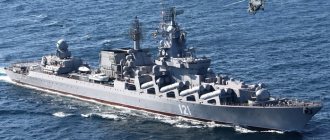Home » Alternative worlds » Sailing ships of the Russian Imperial Navy, part III (Russia Pragmatica III)
Editor's Choice Alternate Worlds
arturpraetor 05/03/2021 1252
24
in Favoritesin Favoritesfrom Favorites 8
Good day, dear colleagues. I am starting to publish a small sub-series on Russia Pragmatic III, and it is dedicated to specific types of ships of the Russian Imperial Navy in this AIshka. The story will be told about the ships that staffed the RIF rowing flotillas - rowing frigates, galleys, scampaways, galliots, and even about pramas.
Content
- Rowing frigates
- Rowing frigates of the "Arkhangelsk" type, 1694
- Voronezh-class rowing frigates, 1696
- Danube-class rowing frigates, 1750
- Rusalka-class rowing frigates, 1778
- Galleys
- Galleys of the "Don" type, 1697
- Galleys of the Preobrazheskaya type, 1708
- Galleys of the Dvina type, 1721
- Scampavey
- Scampaway type "Principium", 1696
- Scampaways of the "Swallow" type, 1697
- Scampaways of the Dolphin type, 1705
- Galiots
- Galiots of the First type, 1703
- Galiots of the Baltika type, 1718
- Galiots of the "Seagull" type, 1751
- Gunboats
- Gunboats of the "Bychok" type, 1733
- Gunboats of the "Cricket" type, 1758
- Gunboats of the Bomb type, 1758
- Kozlovsky's gunboats, 1788
- Pramas
- Pramas of the "Don't touch me" type, 1698
- Pramas of the "Oak Heart" type, 1705
- Notes
Notes
- Initially, it was planned to make xebeks universal heavy sailing and rowing vessels, but there are some nuances about them that limit their use in Russian conditions. Actually, the history of the operation of shebeks in a real RIF is proof of this - few ships, many unsuccessful projects, practically zero trace in the history of the fleet. But rowing frigates, if properly prepared, can be made quite suitable for our conditions, and these will indeed be very popular combat units.
- In essence, this is a galleas, only a few... Peculiar.
- Have I already told you what chaos reigns with the classification of sailing and rowing vessels in practice? It’s time to write a separate article here. But, to be honest, I somehow don’t want to yet, since there is a terrible mishmash there; 5-6 class names could be applied to the same ship at once. At the same time, within the same class, the ships turned out to be different! Under Peter, in fact, there was no clear hierarchy of classes of rowing ships, and only after brigantines moved into the category of sailing ships, and scampaways were “cancelled”, turning into half-galleys, did at least something become clear there. Plus or minus. And still a lot of misunderstandings...
- In reality, galleys were in service in small numbers even in the Crimean War. There was almost no meaning in them. The only thing that comes to mind is towing sailboats that have been damaged in battle and have lost their spars. What is actually a so-so option - you still have to carry galleys with you... That’s why I’m canceling galleys in Russia much earlier than in real life.
- In fact, the Dvina remained almost an isolated phenomenon as a large, “full-weight” galley. Subsequently, in Russia, as far as one can judge, mostly half-galleys or smaller galleys of the Dvina were built, mainly for economic reasons, as well as because of the need to operate in skerries, where large galleys may be somewhat cramped.
- Russia, apparently, had not yet built exactly such gunboats in real life at that time; I essentially licked the project itself from the Danes from several later times - however, something like this is a logical development of a very real Russian concept, so...
Captain non-obviousness, or why seaworthy RIF gunboats are ersatz cruisers
Home » Alternative shipbuilding - Fleets that never existed » Captain non-obviousness, or why seaworthy RIF gunboats are ersatz cruisers
Editor's choice Alternative shipbuilding - Fleets that never existed
arturpraetor 09/27/2021 2617
20
in Favoritesin Favoritesfrom Favorites 10
Have you ever thought that seaworthy gunboats from different countries of the world, be it Germany or Russia, are similar to mini-ersatz cruisers? And in some cases they were called cruisers - unarmored, rank III, advice, and so on, and so on... Where in general lies the border between these classes, and are they so different?
Danish rowing gunboat from the early 19th century. There are no fundamental differences from specially built steam gunboats, with the exception of the propulsion system and dimensions.
Here, first of all, it is worth remembering how the gunboats of the era of iron and steam began, i.e. - what classic gunboats were like. And they were ships built practically according to the same design - a small, shallow-draft vessel, with one powerful cannon in the bow, which had limited firing angles. This scheme is considered a classic, which arose back in the 18th century, and the invention of which is claimed by different states, with varying degrees of validity of their claims to primacy. Initially, such gunboats were sailing and rowing vessels with a powerful running gun, having a shallow draft and intended for operations in rivers and shallow waters - access to the open sea was contraindicated for them. The transition from wood to iron, and propulsion from oars to steam, changed practically nothing here - the Russian gunboat "Experience" differed little from the Danish rowing gunboats from the war with England at the beginning of the 19th century, and both of them had practically no serious differences from the Spanish Mediterranean gunboats "final" design. There were, however, other types and configurations of gunboats, but they were less common, and the appearance of the so-called. “mobilization” gunboats - i.e. gunboats rebuilt from small civilian ships - happened already in the era of iron and steam.
There was practically no attempt to make gunboats of the “classical” layout seaworthy. More precisely, their seaworthiness, of course, increased over time, as did their displacement, but the bulk of the ships of this class were rather coastal “Rendells” than Russian “Sivuchs”, capable of crossing seas and oceans - i.e., it was about expanding the coastal coverage area, but not sending gunboats to sea. However, a subclass of seaworthy gunboats did appear; for example, a number of British ships built in the 1860s can be classified as one. Their functionality was somewhat different from the “classics”, and was closer to frigates and corvettes, or, in the language of modern classification, cruisers. This was the peculiarity of seaworthy gunboats - they were sufficiently autonomous and seaworthy to make overseas voyages, and be able to operate in conditions in which ordinary gunboats would no longer be able to fire. Their main task was to serve as stationary or colonial-representative combat units, like most cruisers, but for cruising operations proper, sea-going gunboats were no longer intended, remaining auxiliary units of the near and far coastal zone. From the “classical” gunboats, they mostly retained the strong driving fire, but now it was not one large gun, but two smaller guns located in the side sponsons in order to make room for the forecastle. It was assumed that the combat capabilities of such seaworthy gunboats would be sufficient to suppress colonial uprisings or fight various kinds of smugglers or corsairs during the war. Support for ground forces on the coastal flank, messenger service, and much more were also not excluded.
And here the most interesting thing begins, because over time, almost all the same functions began to be assigned to various kinds of cruisers of the 3rd rank, advice and similar ships of the cruising class, but cruisers, even small ones, were far from cheap at the end of the 19th century, and not simple, moreover, they were more demanding to maintain than smaller and more simple gunboats. As a result of this, seaworthy gunboats turned into a kind of ersatz cruisers for auxiliary service in the fleet and as representative ships in peacetime. They had the minimum necessary characteristics to perform the tasks of junior cruisers, but were simpler and cheaper, and therefore gained great popularity in a number of countries, including Russia. She became one of the most active builders of seaworthy gunboats, and before the advent of cruisers such as Novik and Zhemchug, cruisers under the St. Andrew's flag were always large, intended for cruising tasks - and all other functions were essentially assigned to seaworthy gunboats.
The famous "Korean" and "Manchu" were used as stationary ships in the Far East, and took part in some "colonial" campaigns (the suppression of the Boxer Rebellion) along with colonial cruisers and gunboats of other countries. On the Black Sea, seaworthy gunboats of the same type as the “Korean” were generally replicated in the number of as many as 6 pieces, and covered two niches at once - warships for operations near the coast, and auxiliary units with the main forces of the fleet. If we consider seaworthy gunboats as ersatz cruisers, it turns out that Russia tried to use them to eliminate the almost complete absence of light cruising forces at its disposal, without spending money on full-fledged “colonial” cruisers. Alas, this saving was only partially justified - seaworthy gunboats in a normal war turned out to be almost completely ineffective, unable to perform cruising functions at least at the level of the crappiest Japanese armored and unarmored cruisers. Low survivability, but most importantly, the “gunner” speed did not allow these ersatz rank III cruisers to prove themselves to any extent successfully.
Of course, this does not mean that seaworthy gunboats were required to perform the functions of small armored cruisers - no one directly declared such purposes for them. However, in practice, it turned out that seaworthy gunboats were expected to replace cruisers of the conditional III rank, but they could not do this. And as the practice of the RYAV has shown, a fleet without a sufficient number of auxiliary combat units, primarily small and not the most outstanding armored cruisers, risks remaining deaf, blind and constrained in actions against the enemy, for which everything is fine with cruisers. Largely thanks to the presence of many Elsviks and oversized gunboats, Japan secured the minimum necessary presence in all directions, and very effectively controlled the space near Port Arthur, and later in the Tsushima Strait. That is, in addition to its best cruisers - armored and large armored cruisers - Japan also had a large naval “reserve”, which had the minimum necessary characteristics to perform auxiliary service in any direction, in any conditions, largely because such ships with no with very clear functionality, they were built very actively before the war. Russia has also been actively building similar ships in the form of seaworthy gunboats since the 1880s, but as it turned out, they no longer possessed the minimum necessary characteristics for reliable service in modern warfare. By refusing to build at least small, but still full-fledged small armored or armorless cruisers in favor of seaworthy gunboats, Russia as a result deprived itself of an important naval reserve in the event of a major war, although this problem was not absolutely obvious. And when we had an acute shortage of cruisers, the Japanese had complete superiority in them at Port Arthur, and even kept a certain number of them in the metropolis.
But we, as AI officers, can also assume another scenario. For example, in Russia already in the 1880s there was some rearrangement of priorities, and a little more money was brought in, which is why there was no break in the construction of small cruisers between the clippers and the Novik. And instead of seaworthy gunboats, they began to build small unarmored and/or armored cruisers. They are required to have a fairly large battery of medium-caliber guns, seaworthiness, average autonomy and relatively small size. Ironically, such ships, when fattened with steroids and modified with a file, are obtained from the same real seaworthy gunboats, which, IMHO, emphasizes their “semi-cruising” origin. Let’s say that instead of the “Korean” we can get a prototype like this for further replication at domestic shipyards:
Cruiser based on the gunboat "Koreets"
Displacement normal 3605 tons, full displacement 4150 tons
Dimensions 85.7x13.95x5.95m
Mechanisms 2 shafts, 2 PM VDR, 10 cylindrical boilers, 6500 hp. = 18 knots
Fuel capacity 300/700 tons of coal
Cruising range 4400 miles (10 knots)
Armor (steel) deck 25-50mm, shields 25mm, deckhouse 75mm
Armament
- 1888: 3x152/35 mm, 8x130/25 mm guns, 8x37 mm revolver guns, 2x381 mm torpedo tubes
- 1895: 9x130/45 mm guns, 8x37 mm revolving guns, 2x7.62 mm machine guns, 2x381 mm torpedo tubes
Crew 356 people
Not the most outstanding example of the cruising class? Agree. And to some, even “Elswicks” may seem more preferable units. But such a “Korean” will be quite seaworthy, still perfectly suitable for stationary and colonial service, including in the Far East, and in the event of war, such a cruiser will be little inferior to the main cruising crowd of the Japanese, especially if it is rearmed. And the project can be developed further, increasing speed, size, strengthening artillery and autonomy. And the 2nd series of similar cruisers may look something like this:
Gunboat "Banner of Socialism", former "Terets". Agree - in this form it looks even more like a small cruiser.
But this is not the end. For, in addition to the “Korean”, the gunboat “Brave” also had strong cruising roots. And if you do a little magic on it, suppress the gunnery principle, and make the “Brave” a full-fledged cruiser of rank II-III, then you will get a very good ship, no worse, or even better, than the Japanese armored decks. Yes, this is still not a masterpiece, but as a relatively mass-produced “workhorse” in the event of a major war, it is quite capable. And as such cruisers continue to accelerate, Novik, Zhemchug, and Boyarin may also emerge. True, such ships will only be useful if they are built in relatively large quantities. If such small armored cruisers remain single copies, then their benefit will be near-zero. Which does not negate the usefulness of their presence in the fleet.
Cruiser based on the gunboat "Brave"
Displacement: normal 3715 tons
Dimensions: 104.4x13.75x4.75m
Mechanisms: 2 shafts, 2 PM VTR, 12 cylindrical boilers, 12000 hp. = 21 knots
Fuel capacity: 500/800 tons of coal
Range: 4500 miles (10 knots)
Armor: carapace deck 25-75mm, shields 50mm, deckhouse 100mm, glacis 130mm
Armament: 2x152/45 mm, 8x130/45 mm, 10x57/52 mm guns, 2x37 mm cannons, 2x7.62 mm machine guns, 3x381 mm torpedo tubes
Crew: 349 people
So, IMHO, if you need to create a domestic line of small armored cruisers of ranks II-III, you don’t have to go far for prototypes - we already had it all, just maximally compressed in size for the sake of economy, and called differently. One has only to increase the displacement and improve the characteristics of the seaworthy RIF gunboats, and they will quickly become quite good cruisers - which will be difficult to achieve, for example, with the German Vespe-class gunboats. But the German seaworthy gunboat “Panther” just as easily turns into a cruiser with proper nutrition and funding, which again hints at what the seaworthy gunboats of various fleets of the world actually were.
PS The performance characteristics of the ships were written for different AIs with different layouts for artillery, calibers and everything else, so some absurdities are possible.

